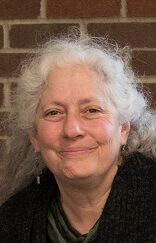I recently had the pleasure of meeting Pamela Porter. Pam retired from LifePath after serving as a Home Care Program Director. She now volunteers in our Long-Term Care Ombudsman Program. Pam agreed to connect so that I could hear more about her perspective as a volunteer ombudsman advocating for long-term care residents.
Long-term care ombudsmen work to resolve problems related to the health, welfare, and rights of people living in nursing homes. They visit nursing and rest homes weekly and talk with residents about issues ranging from loneliness, questions about facility policies and care, understanding their rights and responsibilities, and issues and concerns with roommates and staff. The ombudsman helps to educate residents as well as their family members and friends about their rights, and works to empower residents to actively resolve their concerns. The ombudsman is not a whistleblower, but instead facilitates problem-solving.
Long- term care ombudsmen work to resolve problems related to the health, welfare, and rights of people living in nursing homes.
Pam was called to this work following experiences with family and friends. Knowing that 1 in 5 people will require long-term care at some point in their lives, she is aware that one day she may need to be able to leverage her knowledge and experience to help herself and others close to her.
Pam has enjoyed meeting her fellow ombudsmen, learning from their insights, and hearing their motivations. Pam finds her volunteer colleagues to be “service-minded with an activist perspective.” Some learn of the work because a loved one is or was in a facility. They come from all backgrounds, and Pam believes that individuals find the work to be rewarding and fulfilling. Relationships are made and the ombudsman’s visit may be the only visit that some folks receive. The ombudsman is a friendly face, and “some people just want to talk.”
Before becoming an ombudsman, volunteers participate in 16 hours of live online training over the course of several weeks in areas including regulations governing care, interviewing techniques, confidentiality, appropriate permissions, site observation, and resident-centered care. Pam points out volunteers are “not doing the work alone. We are doing it with great support,” referring to Trevor Boeding, MPH, Director of the LTC Ombudsman Program and Rides for Health. She describes Trevor as “knowledgeable, insightful, and always available to support and guide the work.” Pam also shares that ombudsmen learn a lot from the residents themselves. “This is such useful learning for someone who is aging,” she says.
When asked about any struggles Pam sees in the facilities, she says that in her experience, “everyone in the nursing home is trying to help make things better for those who live there. The ombudsman is just one more person with a specific set of skills working toward this shared goal.”
One challenge that Pam has seen over time is the struggle some residents encounter when trying to remain physically active. In spite of and even because of their clinical conditions, some residents want and need to keep moving in a system that isn’t designed to help them do this outside of a therapy setting. Insurance coverage for physical and occupational therapy is specific and limited. In addition, exercise space may be limited, especially in older facilities, and there may not be staff available to provide safety and support. These systemic and physical infrastructure challenges create barriers to activity that is universally recognized as improving physical, mental, and emotional well-being. One of the top resident complaints is the lack of opportunity to move their bodies and exercise.
Another challenge for people in long-term care is privacy. “Our systems and infrastructure tend to be designed to function more like hospitals and less like the supportive homes long-term care residents want and need,” she observes. Most older sites are shared-room models and have little or no private meeting space.
Pam also highlighted the numerous struggles raised by the COVID-19 pandemic. Facilities struggled with staff shortages. Infection rates and deaths were higher in nursing homes than for any other portion of the population. Visitors weren’t permitted, exacerbating the boredom and loneliness that is already endemic to these settings. Pam and others found themselves needing to communicate with individuals who were not used to the types of technology we were suddenly all using. Pam calls it “a horrific time,” whose impacts are still being felt, and praised those who worked under these conditions.
Pam visits her facility weekly, usually seeing between five and nine residents. While each visit is different, it is certain that someone will need something each week. The problems may take from two minutes to six weeks or more to solve. The requests range from just needing water to a person who feels they are being held against their will. A recent example of the importance of the ombudsman’s role is Pam helping a resident who complained they were receiving food that was contraindicated based on their medications and could have caused a serious reaction.
Pam knows first-hand that while helping folks grow old in their homes is a desirable goal, it may not always be practical or safe. Volunteers like Pam are doing their part to help nursing facilities to be better places for those who need that level of care. LifePath’s Ombudsman Program is currently seeking volunteers. We are also seeking volunteers for Meals on Wheels, Grocery Shopping, Money Management, and Rainbow Elders. Come join us! Please visit our Volunteer Resources webpage, or call LifePath Volunteer Resources at our main number, 413-773-5555, to learn more.




